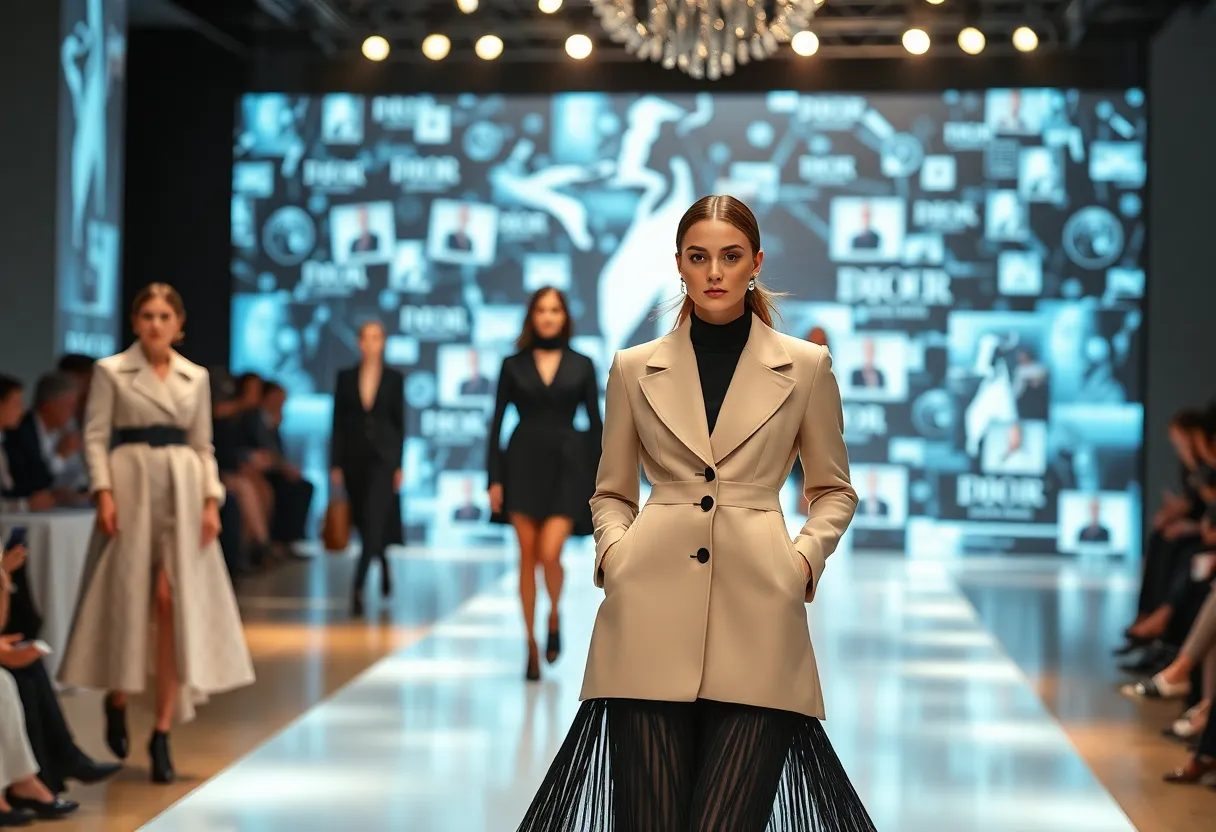News Summary
The Vogue Business Index H1 2025 reveals that Dior has reclaimed its position as the top luxury brand in digital performance, while Ralph Lauren has made history by entering the top five, pushing Chanel out of the rankings. As luxury brands navigate a ‘digital recession’ with declining social media engagement, they must adapt to shifting consumer preferences and leverage social media more effectively.
Dior Regains Digital Dominance as Ralph Lauren Enters Luxury Fashion’s Top Five Amidst Social Media Challenges in H1 2025
In the ever-evolving world of luxury fashion, the Vogue Business Index H1 2025 dropped some intriguing insights this April regarding the performance of top luxury brands. With recent political changes in the United States shaping the digital landscape—especially with the ups and downs of TikTok and new policies from Meta—it has been a wild ride for many brands trying to maintain their foothold.
Dior Takes the Crown Again
One of the biggest stories from the Index is that Dior has reclaimed its place at the top of the digital performance chart. After a brief stint with Louis Vuitton holding the crown in the first half of 2024, Dior’s comeback is noteworthy. This illustrates how quickly the luxury fashion scene can change—it’s like a high-stakes game of musical chairs!
Ralph Lauren on the Rise
Big news doesn’t stop there. For the first time ever, Ralph Lauren has made it into the top five of this Index, pushing Chanel out of the ranking. This showcases a broader trend where luxury brands find themselves competing against premium brands as consumer habits change. Nearly a quarter of people surveyed indicated they might turn to cheaper alternatives, especially with rising prices across the board.
Interestingly, Dior, Ralph Lauren, and Louis Vuitton have been dominating the digital space on Western social platforms, while Giorgio Armani has excelled specifically in Chinese social media, where it ranks second, despite being much lower in the Western channels. These rankings provide a glimpse into shifting consumer preferences across geographic regions.
The Digital Landscape Shifts
As we dive deeper, we discover a phenomenon deemed the ‘digital recession’ in luxury goods. Engagement on social media platforms has faced a significant decline, with Instagram interactions dropping by 19%, Weibo by 4%, and an astonishing 93% fall in YouTube views. Yet, some brands like Tommy Hilfiger, Dior, and Ferragamo are standing strong, managing to thrive even amid these challenging metrics.
Social Media’s Role in Luxury
Social media still plays a pivotal role when it comes to luxury shopping. A striking 40% of luxury consumers discover brands through social media, while another 40% utilize it for research before making their purchases. Consequently, luxury brands are being encouraged to connect with consumers in more meaningful ways, using entertaining content that showcases their values around quality and innovation.
New Faces on the Index
Several new brands made their debut in the Index, including Ami Paris, Jacquemus, and Maje, ranking at 38, 39, and 60, respectively. Each brand showcases unique strategies that mirror their market positions. For example, Ami Paris sticks to traditional digital strategies while using celebrity endorsements to emphasize its legacy. On the other hand, Jacquemus plays the quirky card, crafting eye-catching, light-hearted content to woo consumers.
Maje, while boasting a high follower count, needs to ramp up its engagement strategies, leveraging culturally relevant material to connect better with its audience. The varying degrees of success among these brands highlight the necessity for tailored approaches when aiming for momentum in different markets.
The Power of Celebrity Influence
It also can’t go unnoticed how significant celebrity influence remains. Luxury brands continue to lean heavily on star power to enhance visibility and engagement. Prada, for example, maintains a solid grip on digital performance thanks to its strong connections with cultural events, resulting in high engagement levels.
Emerging Trends and Challenges
A more technical shift is underway with the introduction of Digital Product Passports (DPPs), becoming standard in the face of new EU regulations. These passports aim to provide a digital identity for luxury items, enhancing customer engagement. However, brands face challenges ensuring consumer understanding and awareness of these new features, which might limit their adoption rates moving forward.
In a world that appears to be shifting at lightning speed, the luxury fashion industry continues to adapt and evolve. In the coming months, it will be fascinating to see how brands respond to these challenges and changes, and which strategies they employ to connect with the modern consumer.
Deeper Dive: News & Info About This Topic
HERE Resources
The Central Role of Customer Experience in Transforming Marketing Strategies Blazes a Trail in 2025
Marketing Teams Need to Get Ready for 2025: Top Priorities to Focus On
Interbrand Report Reveals $200 Billion in Missed Revenue and Highlights Apple’s Strategic Branding Approach
Fashion Forward: How New Trends and Cultural Influences are Transforming the Industry
Additional Resources
- Vogue Business: Traditional Digital Marketing Is Going Amiss
- Netguru: Disrupting the Luxury Fashion Market
- Business of Fashion: Millions of Luxury Products Have Digital IDs
- Luxury Daily: Digital Dilemma in Luxury Brands
- Jing Daily: Luxury Giants Rally Behind New Digital Fashion Initiative
- Wikipedia: Luxury Brand
- Google Search: Luxury Fashion
- Google Scholar: Luxury Brands Digital Marketing
- Encyclopedia Britannica: Luxury Brands
- Google News: Luxury Fashion Trends









